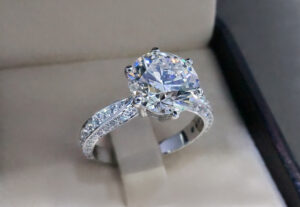
The brilliant shine of the diamond can easily enchant the beholder. The gem’s dance of light, when cut in perfect proportions, can be one of the world’s most captivating rarities. While the diamond cut is important, diamond clarity is also important for the gem’s aesthetic and light performance. There’s nothing keeping the light from lighting the diamond without inclusions or other types of imperfections, turning it into what appears to be a small star gleaming on your finger and the finest spectacle that connotes timeless commitment.
Internal diamond anomalies are referred to as “inclusions,” whereas external anomalies are referred to as “blemishes.” When addressing inclusions, I avoid using the term “flaws” because they are present in every diamond to some degree. What matters is their visibility and number. During the evolution of a stone from carbon to a rough diamond, diamond inclusions form naturally. Inclusions aren’t caused by a mistake by the diamond cutter, contrary to common perception.
Least Common And Most Common Diamond Inclusions
Pinpoints and feathers are the two most prevalent diamond inclusions. Pinpoints are diamond blackheads that appear as tiny spots on the table, the diamond’s “face.” The feather, a type of internal diamond crack, is another typical addition. When it comes to feathers, the durability of a diamond is frequently questioned. A feather inclusion, on the other hand, should not be a reason for concern until it spans the length of the diamond or touches the diamond’s surface.
A cavity is the rarest type of diamond inclusion. A diamond cavity is the same size as a cavity in teeth. Diamond cavities are rare because diamonds with too many or too big of these types of inclusions are classified as industrial-grade instead of gem-grade. You won’t encounter many diamonds with cavity inclusions unless you’re looking at a lot of gemstone saws and drill bits.
Will Certain Diamond Inclusions Reduce The Stone’s Value?

When you buy diamond rings, it is important to check the clarity of the diamond. Internal inclusions have a smaller impact on diamond quality and price than external flaws. A chip or break is far more visible to the naked eye, and hence has a negative impact on a stone’s clarity grade. These flaws, on the other hand, are uncommon and usually appear after the stone has been polished and evaluated.
Poor ring settings or ordinary wear and tear can cause chips and cracks. Even though diamonds are the toughest substance, they can be chipped by a strong hit against a sink or countertop. Diamond inclusions are also present in lab-grown diamonds. However, they have lesser flaws than natural diamonds.
